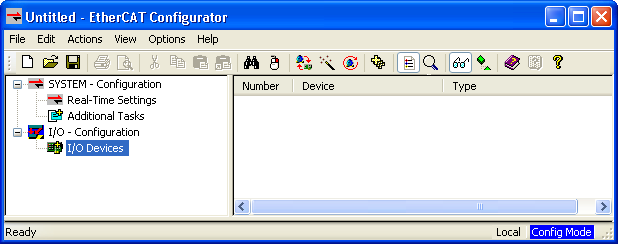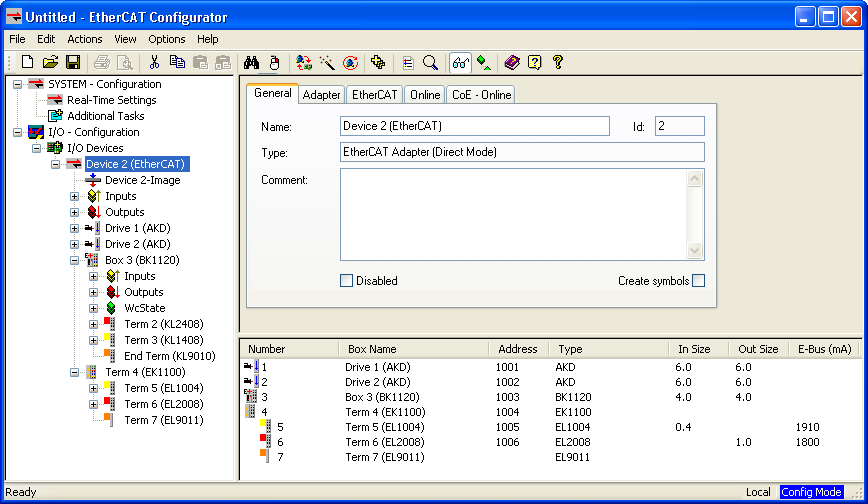2. Ethercat Configurator – Add base .XML file and Startup the Ethercat Configurator
The Ethercat configurator is available at the following location: http://www.beckhoff.com/english.asp?download/default.htm

It will be used to create a complete system .XML![]() "Extensible Markup Language "
XML is a general-purpose markup language. It is classified as an extensible language because it allows its users to define their own tags file containing both the Kollmorgen Standard devices and other devices.
"Extensible Markup Language "
XML is a general-purpose markup language. It is classified as an extensible language because it allows its users to define their own tags file containing both the Kollmorgen Standard devices and other devices.
After the EtherCAT![]() EtherCAT is an open, high-performance Ethernet-based fieldbus system. The development goal of EtherCAT was to apply Ethernet to automation applications which require short data update times (also called cycle times) with low communication jitter (for synchronization purposes) and low hardware costs Configurator is installed on a PC, the base AKD XML file (adaptedAKD.xml) must be added to the following directory:
EtherCAT is an open, high-performance Ethernet-based fieldbus system. The development goal of EtherCAT was to apply Ethernet to automation applications which require short data update times (also called cycle times) with low communication jitter (for synchronization purposes) and low hardware costs Configurator is installed on a PC, the base AKD XML file (adaptedAKD.xml) must be added to the following directory: C:\ProgramFiles\EtherCAT Configurator\EtherCAT. This file is then used in to create the system .XML file that will be imported into the .KAS project
Next startup the EtherCAT Configurator (supported in WinXP but not Win7):
- Launch EtherCAT Configurator and start a new file.
- Select in the tree view on the left the item “I/O Devices” and click on the magic wand button in the toolbar (Start view of the EtherCAT Configurator).
- Select the EtherCAT device.
- Scan for the nodes
- Don’t add the drives found to the NC-Configuration (if asked)

Figure 7-241: Start view of the EtherCAT Configurator








